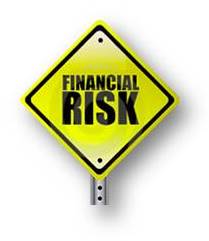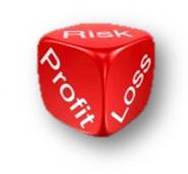|
|
|
||
|
|
|
||
|
|
|
Welcome to our Summer 2016 Edition and 54th Claim Solutions’ Newsletter.
In this newsletter we tackle the subject of the underinsurance clause. Why is it necessary? How can you avoid it? Having insured the business for all appropriate risks at the correct values we then provide 10 tips which we believe are critical for a positive claims experience.
If you, or your clients, have suffered loss or damage we wish you a speedy recovery. If you have experienced a loss and have an insurance claim we are available to assist you.
We welcome your enquiries.
All our newsletters over the past 16 years have been indexed to provide you with an online compendium of our claims experience. Browse our Index here to find articles which interest you.
It is critical to ensure that an insurance policy responds to the required risks. Having decided which risks to insure it is equally important to ensure the values declared on the policy are correct. If they are too low an underinsurance penalty may apply.
Many insureds believe that if the declared value is insufficient they may claim up to the amount specified in their Schedule of Insurance. This may not be correct. An underinsurance penalty may mean that the insurance policy can only respond to a portion of the amount claimed.
At the risk of oversimplification the theory works like this. The Insurer insures a number of classes of business. For example, it insures the replacement value of property against fire. It accumulates the total replacement value of all the properties insured and based on its claims experience assesses the value of the probable claim payouts. It then calculates a loss ratio i.e. the proportion of the claim payouts to the value at risk. To this it adds an allowance for its operating costs and the required level of profit to determine the necessary insurance premium. Once collected, the premium provides a pool of funds from which claims can be paid.
If all insureds under declare the value at risk there will be insufficient funds in the pool to pay claims and the insurer will not survive. If one Insured under declares its value at risk it should not expect to receive the full value of its claim as this would leave insufficient funds in the pool to meet claims made by those insureds who have adequately declared. It may not be popular but the under insurance penalty is necessary. It protects the insurer’s cash flow to ensure it remains viable to meet its claims liability.
No doubt returns on invested funds and market competitiveness also influence the final insurance premium.
So now that we recognise that an under insurance penalty is necessary, how can the application of the penalty be avoided?
 Most Industrial Special Risks (ISR) and commercial policies provide reinstatement cover. This means that in the event of a loss the Insured is entitled to the current equivalent replacement provided the Declared Values are adequate. The reinstatement values of property should be carefully considered.
Most Industrial Special Risks (ISR) and commercial policies provide reinstatement cover. This means that in the event of a loss the Insured is entitled to the current equivalent replacement provided the Declared Values are adequate. The reinstatement values of property should be carefully considered.
Buildings should be insured for their full reinstatement value. Not their market value but the cost which would be incurred to rebuild them based on current replacement values. It may be appropriate to obtain a professional property valuation report.
Plant, equipment and contents should also be insured for their current replacement value i.e. the cost which would be incurred to replace and install the property on the premises including all transport costs.
Stock should also be insured at its full replacement value.
When reviewing the recent storm damage claims in Melbourne it was apparent that some property was not insured and had slipped through the cracks when determining Declared Values or separate sub limit requirements. This arose from the following situations:
- consignment stock, which was required to be insured when in the custody of customers was not;
- customer goods for which a business was required to insure were not;
- the property was excluded under the ISR policy and was not otherwise insured eg. registered motor vehicles.
- customer goods were only covered under liability policies not property policies.
It is important to be fully aware of the property for which the business is responsible. This may range from the simple eftpos or vending machines to higher value consignment stock, or customer goods.
Similarly, it is necessary to ensure that customers or service providers have adequately insured your property while it is in their custody? How effective are the conditions of such transactions on the reverse of purchase order or their invoice?
Don’t underestimate the cost of underinsurance. It may be the difference between surviving a loss or not.
Underinsurance - Business Interruption?

FUTURE
Most insurance policies including the standard Mark IV Industrial Special Risks policy refer to the term “future” as the “indemnity period”. This is the period from the date of loss to the date the results of the business return to normal. The time it takes for the results of the business to return to normal must be nominated after considering factors such as the period required to rebuild, reinstate contents, relocate to alternative premises, re-employ & train staff, win business back from competitors, etc. In our experience it usually takes longer for the results of the business to return to normal than originally anticipated. Most claims prepared by us have an indemnity period of 12 months or more.
If an “Indemnity Period” of 12 months is selected it is important to recognise an insured event may occur on the last day of the period of insurance. If so the indemnity period commences on this date and the cover may respond over the following 12 months. As a result it is not only necessary to consider the results of the business over the period of insurance but over the following twelve months. If an indemnity period in excess of 12 months is required the results of the business need to be considered further into the future.

A Business Interruption policy most commonly insures Gross Profit. The insurable Gross Profit may differ from the accounting Gross Profit. The insurable Gross Profit is defined in the policy. The Gross Profit used to determine the Declared Value must be consistent with this definition. Many Industrial Special Risks policies define Gross Profit as the Sales (net of discounts) plus Closing Stock less Opening Stock less Uninsured Working Expenses. You need to review the most recent annual Profit & Loss Statement prior to renewal of the cover and extract the Sales (net of discounts), Closing Stock & Opening Stock. Uninsured Working Expenses also need to be extracted. These are the expenses which do not need to be insured. They should only include those expenses which vary directly with the level of sales. They differ from one business to the next but may include purchases, freight, energy, etc. Remember, the longer the list of uninsured working expenses the greater the risk of underinsurance.
Once the historical, insurable Gross Profit is determined this should be expressed as a ratio to sales to determine the insurable Rate of Gross Profit. You need to consider whether a similar rate will be incurred in the “future”. If so, it may be used to determine the Declared Value. If not, it needs to be adjusted to reflect the rate which you expect to achieve in the “future”.
DECLARED VALUE ON GROSS PROFIT
The Declared Value on Gross Profit is determined by applying the adjusted Rate of Gross Profit to the maximum annual sales over the renewal period and beyond, depending on the selected indemnity period.
CONCLUSION
Underinsurance on the Gross Profit section of a Business Interruption policy is common but can be avoided with proper consideration and explanation.
Ten Ways to Improve the Claim Experience

1. COMMUNICATE
Communicate well! One of the most common reasons for a claim to become difficult to settle is poor communication. Claims are not black & white. They can involve loss, trauma and emotion. They involve insurance policies, interpretation and the payment of money. This is a recipe for issues to arise, differences in opinion and clashes of personalities.
If problems occur it is critical they be identified and communicated as soon as possible. Issues need to be resolved at the earliest opportunity. Claims are a time for clarity of thought and, above all, accurate communication.
2. LISTEN
Accurate communication is impossible without listening. The claims experience can be improved by listening to all parties especially the Insured. The Insurer, broker, loss adjuster and claims preparer will never know the Insured’s business as well as the Insured themselves. It is important to obtain a clear understanding of the business and the impact of the loss on the business for a claim to be successfully resolved.
3. ACT PROMPTLY
Just as important as accurate communication is promptness. The best time to document a claim is immediately after the loss. The best time to address issues is as soon as they arise and the best way to resolve a claim is as soon as adequate documentation has been presented.
Claims are dependent on external events; storms, fires, cyclones, earthquakes, etc. Claims volumes can increase dramatically unexpectedly restricting the ability to respond promptly. If this occurs it is important to consistently reappraise and inform the insured when the claim may be resolved.
4. PAYMENTS
One of the best methods to ensure confidence in the claim process is for an early progress payment to be made. It confirms the Insurer has accepted liability under its insurance policy and, in the case of Consequential Loss claims provide vital cash flow to allow a business to survive.
5. POLICY WORDING
The policy wording is the rule book we must all follow to resolve a claim. A poorly structured insurance policy is likely to lead to confusion, debate and disagreement. It is critical for the policy wording to be written with unfailing clarity where no word is wasted and the right word is used on every occasion.
6. REASONABLE PROOF
Avoid documentation paralysis. It is important for a claim to be documented well. However on occasions the level of documentation requested may become unreasonable. For example if an insured submits a claim for stock containing over say 10,000 line items it is unreasonable to expect documents to be supplied to support the replacement cost of all stock items. Such a request would be unreasonable and quickly paralyse the claim. The claim becomes a matter of Standard of Proof rather than loss or damage. It is important to remain focused and “reasonable”.
7. AVOID PROFILING
The characteristics of some claims may fit a profile which suggests it is genuine while the characteristics of another claim may suggest it is not. It is important to consistently endeavour to avoid the conscious or sub-conscious profiling of claims. The circumstances and personalities involved in every claim are different and each claim needs to be assessed on its merits.
8. THINK LATERALLY
Claims are many and varied. Claim Solutions applies insurance policies to claimants from manufacturing operations, medical institutes, retailers, to transport companies and private schools, etc. It is important to keep an open mind, think outside the square and make the policy work.
9. UNDERSTANDING
Insurers, brokers, loss adjusters and claim preparers understand the claim process. They deal with it regularly. With repetition comes familiarity. Claims literacy amongst Insureds is uncommon. Fortunately they are unlikely to be exposed to claims regularly. It is important for all parties to recognise and make allowances for this imbalance of knowledge. We must ensure that the Insured is provided with every opportunity to understand the claim process and settlement.

The right professionals must be matched to appropriate claims. For example it is inappropriate for a loss adjuster specialising in Property Damage to report on a Consequential Loss claim. It is also inappropriate to engage a builder specialising in domestic dwellings to reinstate a multi storey office block.
The claim experience can be improved by ensuring the claim is supported by a solid team of professionals appropriately qualified for the task at hand.
CONCLUSION
Claims and their resolution can be a complex process and we hope these ten points may assist to improve the claim experience.
Claim Solutions provides a specialist insurance claims service. Our firm is recognised as one of the leading practices in this field with both national and international companies featuring amongst our clients. Our aim is to provide an efficient, professional and complete claims service which responds to your needs in times of crisis. We are available to assist you and your clients.
The Articles which appear in this Newsletter are not intended to be a substitute for specific technical advice.

